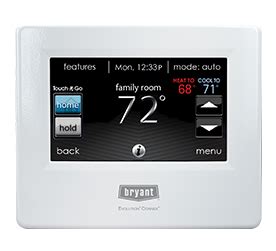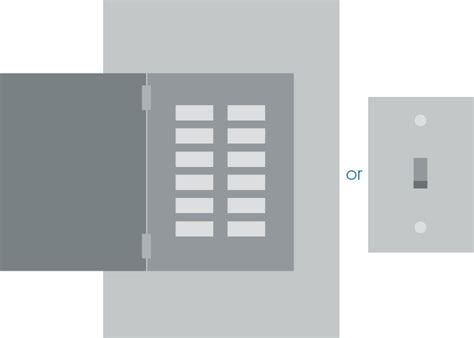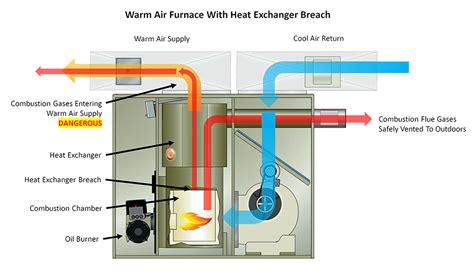There could be several reasons why your furnace turns off and then right back on. One possible cause is a dirty air filter, which can restrict airflow and cause the furnace to overheat and shut off as a safety measure. Another reason could be a malfunctioning thermostat, which may be incorrectly sensing the temperature and causing the furnace to cycle on and off. Additionally, a faulty limit switch or flame sensor could be causing the furnace to shut off prematurely.
It’s important to have a professional HVAC technician diagnose and fix the issue to ensure proper functioning and prevent further damage to the furnace.
Why does my furnace stop and then start again?
If you’ve noticed that your furnace is turning on and off frequently, it could be due to a short cycle. This occurs when the furnace is forced to cycle more often than necessary to maintain the temperature set on your thermostat. Ideally, a properly sized furnace should cycle 3-8 times per hour. If your furnace is short cycling, it could be a sign of an underlying issue that needs to be addressed.
How do I stop my furnace from short cycling?
Short cycling is a common problem with furnaces that can lead to increased energy bills and wear and tear on the system. There are several possible causes of short cycling, including a dirty air filter, a malfunctioning thermostat, or a faulty limit switch. To stop your furnace from short cycling, start by checking and replacing the air filter if necessary. Next, make sure the thermostat is functioning properly and set to the correct temperature.
If these steps don’t solve the problem, it may be necessary to call a professional HVAC technician to diagnose and repair the issue. Regular maintenance and cleaning of your furnace can also help prevent short cycling and extend the lifespan of your system.
Why does my furnace only run for a few seconds?
If you’re experiencing issues with your furnace short cycling, there are a few common culprits to consider. One possibility is an overheating heat exchanger, which can cause the furnace to shut off prematurely. Another potential cause is a dirty flame sensor rod, which can prevent the furnace from igniting properly. Finally, a blocked flue pipe can also lead to short cycling by preventing proper ventilation.
It’s important to address these issues promptly to ensure your furnace is functioning safely and efficiently.
Is it normal for a furnace to kick on and off?
Short cycling is a common issue that occurs when a furnace repeatedly turns on and off. This problem typically stems from within the heating system itself and can lead to permanent damage if left unaddressed. In addition to potential damage, short cycling can also result in higher utility bills. Therefore, it is important to promptly diagnose and correct any instances of short cycling in your furnace to ensure its longevity and efficiency.
Why does my furnace turn on then off after a few minutes?
If you’re experiencing issues with your furnace shutting down after only a short period, it’s highly probable that the flame sensor is either unclean or defective. The flame sensor plays a critical role in monitoring the gas burner, and if it fails to detect the burner, the furnace will only run for a brief time before shutting down and restarting. It’s important to keep this component clean and functioning correctly to ensure your furnace operates efficiently and effectively.
Can bad thermostat cause furnace to kick off?
A malfunctioning thermostat can disrupt the proper functioning of your HVAC system, causing it to turn on and off at irregular intervals. This can lead to uneven distribution of cool or hot air, with areas closer to the HVAC system receiving more air while those farther away receive very little.
What are the signs of a bad thermostat?
“`Some signs of a bad thermostat include fluctuating temperature readings, a constantly running or never turning on HVAC system, and a lack of heat or cool air. Other symptoms may include strange noises coming from the HVAC system, a sudden increase in energy bills, and a malfunctioning fan. If you suspect that your thermostat is not functioning properly, it is important to have it inspected and repaired by a professional HVAC technician. Ignoring the issue can lead to further damage to your HVAC system and potentially higher repair costs in the future.
“`
How do I know if my furnace or thermostat is bad?
If you suspect that your furnace or thermostat is not functioning properly, there are a few signs to look out for. If your furnace is not producing enough heat or is making strange noises, it may be a sign of a malfunction. Additionally, if your thermostat is not accurately controlling the temperature in your home, it may be time for a replacement. Other signs of a faulty furnace or thermostat include frequent cycling on and off, high energy bills, and poor air quality.
It is important to have a professional inspect and diagnose any issues with your heating system to ensure it is functioning safely and efficiently.
How do you know if you need a new thermostat?
If you find that your room is consistently warmer than your desired temperature and your air conditioning system isn’t turning on, it’s possible that your thermostat is faulty. Upgrading to a smart thermostat is a great solution, especially if you’re still using a manual one. With a smart thermostat, you can easily control the temperature of your home from your phone or other devices, even when you’re not there. Plus, many smart thermostats have features that can help you save money on your energy bills by automatically adjusting the temperature based on your schedule and preferences.
How many years should a thermostat last?
The lifespan of a thermostat can vary depending on the type and quality of the device. On average, a programmable thermostat can last up to 10 years, while a smart thermostat can last up to 15 years. However, regular maintenance and proper usage can extend the lifespan of a thermostat. It’s important to replace a thermostat if it’s not functioning properly or if it’s outdated, as a malfunctioning thermostat can lead to energy waste and higher utility bills.
Overall, investing in a high-quality thermostat and taking care of it can ensure it lasts for many years.
How many years does a thermostat last?
The lifespan of a thermostat can vary depending on the type and usage. On average, a programmable thermostat can last up to 10 years, while a manual thermostat can last up to 25 years. However, factors such as frequent adjustments, power surges, and improper installation can shorten the lifespan of a thermostat. It is important to regularly maintain and replace your thermostat to ensure it is functioning properly and efficiently.
Upgrading to a newer, more advanced thermostat can also provide additional benefits such as energy savings and remote access control.
How much does it cost to replace a new thermostat?
Replacing a thermostat is a common household expense that can range from $120 to $330, with an average cost of around $210. This includes the cost of the new thermostat, as well as the installation fee. The national average for a new thermostat is also around $210, with most homeowners falling within the $120 to $330 range. It’s important to note that the cost may vary depending on the type of thermostat and the complexity of the installation process.
Can a homeowner change a thermostat?
If you’re looking to save some cash, you may consider installing or replacing your thermostat on your own. However, it’s important to note that you’ll need some basic electrical knowledge and a general understanding of the equipment being used. While it may seem daunting at first, with the right resources and guidance, it can be a manageable DIY project. Just be sure to do your research and follow all safety precautions to avoid any mishaps.
What happens if I don’t replace my thermostat?
When your engine starts to warm up, the thermostat will slowly open up, enabling the coolant to flow through the radiator. However, if the thermostat malfunctions, your engine will overheat, and if you don’t address the issue, it can cause your engine to boil over. This can result in expensive repairs, so it’s important to keep an eye on your engine’s temperature gauge and address any issues promptly.
Do you need an electrician to install a new thermostat?
Are you wondering if you can install a thermostat on your own? It’s always better to hire a professional electrician to do the job for you, especially if you don’t have any prior electrical experience. Improper installation can cause serious damage to your wiring, lead to a blown fuse, and even pose a safety hazard. Don’t take any chances with your home’s electrical system – leave it to the experts.
How often should a furnace cycle on and off?
The frequency of a furnace cycling on and off depends on various factors such as the size of the furnace, the temperature setting, and the insulation of the home. Generally, a furnace should cycle on and off every 10-15 minutes to maintain a consistent temperature. However, if the furnace is cycling on and off too frequently, it could indicate a problem with the thermostat or the furnace itself. It’s important to have a professional inspect and maintain your furnace regularly to ensure it’s functioning properly and efficiently.
Why does my furnace turn on and off every 15 minutes?
If you’re experiencing issues with your furnace shutting off after only 15 minutes, it’s highly probable that a dirty air filter is the culprit. To prevent harmful debris from accumulating and obstructing your system’s functions, it’s crucial to replace dirty air filters every 90 days at a minimum. Neglecting to do so can result in the distribution of unhealthy air throughout your home, which can have negative impacts on your health and well-being.
How do I know if my furnace is short cycling?
If you notice that your heater is turning on and off frequently without producing any heat, it could be a sign that your furnace is short-cycling. Ideally, a furnace that is the appropriate size for your home and functioning correctly should cycle around three to eight times per hour. If you suspect that your furnace is short-cycling, it’s important to have it inspected by a professional to prevent any potential damage or safety hazards.
Can a thermostat cause short cycling?
Short cycling is a common issue that can occur with HVAC systems, and it’s often caused by problems with the thermostat. When the thermostat malfunctions, it can send incorrect signals to the HVAC system, causing it to turn on and off rapidly. This can lead to a number of problems, including increased wear and tear on the system, higher energy bills, and reduced comfort in your home. If you’re experiencing short cycling, it’s important to have your thermostat checked by a professional to ensure that it’s working properly.
By addressing this issue, you can help to improve the efficiency and longevity of your HVAC system, while also enjoying greater comfort and lower energy costs.
Related Article
- Why Does My Floor Drain Back Up When It Rains?
- Why Does My Female Dog Stand Over My Male Dog?
- Why Does My Female Dog Lift Her Leg On Me?
- Why Does My Dog Wrap His Paws Around My Arm?
- Why Does My Dog Lick My Face When I Cry?
- Why Does My Dog Jump Up Suddenly When Lying Down?
- Why Does My Dog Cry When He Sees Other Dogs?
- Why Does My Cat Rub Her Face On My Phone?
- Why Does My Cat Pee On Towels On The Floor?
- Why Does My Cat Always Have To Be Touching Me?


